- Home
- Neil Gaiman
Don't Panic Page 7
Don't Panic Read online
Page 7
Douglas Adams, displaying perfect hindsight, said, “I should have known better, but I had so many problems to contend with at that time I really wasn’t thinking clearly. The thing at the Rainbow was a fiasco.”
Douglas wrote additional material for the play (including the Dish of the Day sequence in Milliways, which subsequently found its way into the literary and televisual version of the show).
An article appeared in The Stage, the theatrical newspaper, about the Rainbow production, in July 1980:
A five-piece band backs the twenty-strong cast of The Hitchhiker’s Guide to the Galaxy, a musical* based on the radio series that opens at the Rainbow for an 8 week run on July 16th 1980. Production has a £300,000 budget, and the front of the Rainbow will be redesigned as an intergalactic spaceport. Tickets £5, £4 and £3.
The foyer of the theatre is being converted into the control deck of a spaceship, with banks of video screens, flying saucers hanging from the ceiling, and possibly a talking computer to advise passengers when the trip is going to begin. There will be usherettes dressed like aliens—‘Probably coloured green,’ says co-producer Richard Dunkley—and a ‘space bar’ selling galactic-sized burgers and the now famous Pan Galactic Gargle Blaster.
One of the diversions will be rock musician Rick Wakeman, soaring down from the roof on a flying saucer and dressed like the legendary Mekon, SF’s most endearing little green man.
This week workmen installed a vast revolving stage while others completed a backdrop for the day the Earth gets demolished.
In California, the people who brought the Laserium to the London Planetarium were devising a spectacular new bag of tricks. Co-producer Philip Tinsley said, ‘This will be the first show since Rocky Horror to appeal directly to young people.’
As the publicity for the show gained momentum a twenty-five-foot inflatable whale was thrown off Tower Bridge into the Thames, and made almost no splash in terms of news. (“The police were very, very cross”, said The Standard in the ¾ of an inch they devoted to it.)
Then the show opened.
In retrospect this may have been a mistake. Such descriptions as “I cannot imagine a more tedious way to spend an evening” (Daily Mail), “clumsy without ever being cheerful” (Time Out), “embarrassing” (Observer), “never-ending and extremely boring” (Standard) melt into insignificance when placed beside the actual reviews, most of which dissected the show with fine and sharp scalpels and left nothing wholesome behind. A fairly average example of the put-downs was Michael Billington’s in The Guardian, which stated that, “What happens on the Rainbow stage is certainly inchoate and barely comprehensible… Ken Campbell has directed this junk-opera and I can only say he gave us infinitely more fun in the days of his Roadshow when the highlight used to be a man stuffing a ferret down his trousers”*.
What went wrong? A number of things. The length, for one. The laser beams, sound effects and backing band for another. What was almost universally acknowledged as appalling acting for a third.
Douglas Adams explained it as, “The size of the Rainbow—a three-thousand-seater theatre—and, because Hitchhiker’s tends to be rather slow-moving and what is important is all the detail on the way… you put it in something that size and the first thing that goes out the window is all the detail. So you then fill it up with earthquake effects and lasers and things. That further swamps the detail and so everything was constantly being pushed in the wrong direction and all the poor actors were stuck on the stage trying desperately to get noticed by the audience across this vast distance. If you’d put the numbers we were getting into a West End theatre they would have been terrific audiences—700 a night, or whatever. But 700 people isn’t much when the producers are paying for three thousand seats. So the whole thing was a financial disaster.”
Ken Campbell, a man almost impossible to get hold of, claimed the reason for the success of the ICA and failure of the Rainbow was simpler than that. “In the ICA we put everybody on a hovercraft. We just never found a hovercraft big enough for the Rainbow,” he told me in the shortest interview I did for this book*.
Four weeks into the run the show was in financial difficulties.
On 20th August The Standard reported co-producer Dunkley as saying, “I think we should struggle on. The cast and crew agree with me, and a certain number of them agreed to wait for their money. We had a very negative press, and it wasn’t known at the beginning how many Hitchhiker’s fans there were.” The next day, however, The Standard reported that, “Last night the big musical** version of the cult radio show did not go on and after playing at times to twenty percent capacity [ie. 600 people] its season has been ended three weeks prematurely. Richard Dunkley reported that everybody concerned had lost a lot of money, but it was impossible to say how much.”
It is easy to be wise after the event, but it would appear that the biggest mistake was that of trying to create a Cult Success. You don’t gain a cult following for something big and bold and heavily hyped: a smaller, less flashy, less expensive production might well have succeeded where the galumphing Rainbow production failed.
As indeed, it has. Helping the fans and public to get over the Rainbow disaster was the Theatr Clwyd production. It surfaced again quietly a year later, and has been regularly and successfully staged by other theatre companies since. This adaptation, which, alone of all post ’79 versions includes the Haggunenon sequence, and indeed actually has an inflatable Ravenous Bugblatter Beast of Traal, is uniformly popular with critics and public alike, and will, one hopes, still be revived and performed when the Rainbow fiasco has completely been forgotten.
FORD AND ZAPHOD:
Zaglabor astragard!
Hootrimansion Bambriar!
Bangliatur Poosbladoooo!
ARTHUR: What the hell are you doing?
FORD: It’s an ancient Betelgeuse death anthem. It means, after this, things can only get better.
THEY START TO SING AGAIN.
THE COMPUTER BANK EXPLODES.
END CREDITS.
— Alternative version.
At least twenty amateur stage productions are known to have been performed around the world over the years, variously adapted from the novel, the radio scripts or the Petherbridge script. Hitchhiker’s has been presented on stage as far afield as Bermuda, Australia, Hawaii and Germany; it has been performed once as a one-man show and once as a musical*. There was also a stage production’ of Douglas’s novel Dirk Gently’s Holistic Detective Agency—retitled Dirk—in Oxford in 1995, which has enjoyed periodic revivals.
* No, it wasn’t a musical, although there was a backing group.
* The man who stuffed the ferrets down his trousers was Sylvester McCoy, later the seventh televisual Doctor Who.
* That was it.
** It wasn’t a musical, honestly.
* This actually was a musical, although the audience wished it wasn’t.
11
“CHILDISH, POINTLESS, CODSWALLOPING DRIVEL…”
On Monday, 21st January 1980, at 10.30 pm, the second series of The Hitchhiker’s Guide to the Galaxy went on the air. It was heralded by a cover feature in the BBC television and radio listings magazine, Radio Times—it is almost unheard of for a radio programme to get such exposure, despite the name of the magazine—and the five episodes were broadcast at the same time every evening through the week.
This caused problems.
To begin with, as already detailed at length, in 1979 Douglas was under a great deal of pressure as far as other work commitments were concerned, and his normal tendency to put off writing until the last deadline had safely passed was displayed in full when it came to getting the scripts written. However, when he had agreed to produce the second radio series, Geoffrey Perkins had taken this into account.
Perkins went on holiday in September 1979, and before leaving spoke to David Hatch, controller of Radio 4, about the new series. Hatch wanted to know if they could have the second series of Hitchhiker’s ready to be broad
cast in January.
There had already been a seventh episode of Hitchhiker’s, the ‘Christmas Special’, recorded on 20th November 1978, and broadcast on Christmas Eve. It had been recorded as a one-off, but had basically taken the plot strands from the end of Episode Six (ie. everybody was either stranded back in time with no hope of ever returning, or had been eaten by a carbon-copy of the Ravenous Bugblatter Beast of Traal), and had started them off in a different direction, which involved Zaphod’s mysterious quest to find the guy who was running the universe. (“This Christmas Programme was basically done by my moving into Douglas’s flat. He scribbled upstairs and I was downstairs typing. That’s how we got that together.”—Geoffrey Perkins.)
Fit the Eighth, the first episode of the second series, reunited Zaphod, Ford and Arthur. Recording of the second series had begun in May 1979, so Hatch’s request for the show to begin in January 1980 was not really that unreasonable. Geoffrey Perkins thought it was a good idea: “We were working on them at a fairly leisurely pace, and I said, ‘Yes.’ We needed a deadline, or we could have gone on till the crack of doom. I thought, ‘We’ll have made three episodes by then, and we’ll do the rest of them over the next five weeks.’
“Then I went on holiday. I came back to find David had done a deal with the Radio Times—they would put us on the front cover if all the shows went out in a week. It was madness, really.”
The second radio series was onerous for everybody. For Douglas Adams it was especially difficult: “I was terrified of doing the second series, because the first time it was just me in my own private little world writing this thing. Nobody expected it to be any good. The second series, the eyes of the world were upon me. It was like running down the street naked, because it had suddenly become everyone else’s property as well.”
Due to the deadlines there was another problem: much of the second series was a first draft. For the first series, Douglas had written and rewritten, self-editing mercilessly. On the second series, there simply wasn’t the time. While Fit the Eighth had been started on 19th May 1979, Fit the Twelfth was still being mixed shortly before it was due to be broadcast, on 25th January 1980.
The recordings soon reached the point at which the cast had caught up with the author: “They were recording part of the show in one part of the studio, while I was in another part of the studio actually writing the next scene. And this escalated to the point where the last show was being mixed in Maida Vale about half an hour before it was due to be broadcast from Broadcasting House. At which point the tape got wound round the capstan, and they had to take the tape recorder apart to unwind it, then get it onto a motorbike to be taken to Broadcasting House. At one point, we nearly sent them the first half of the tape, then we were going to unwind the second half and get it down to Broadcasting House before they had finished playing the first half. Geoffrey Perkins, Paddy Kingsland and Lisa Braun all deserved medals for that!”
The reviews for the series were almost all excellent, despite the fact that many of the reviewers had only heard extracts from the six episodes (due to the fact that the bits they didn’t hear hadn’t yet been mixed but no-one was going to tell the reviewers that…).
The only voice raised against the series came from Mr Arthur Butterworth, who wrote to the Radio Times, saying, “In just about 50 years of radio and latterly TV listening and watching, this strikes me as the most fatuous, inane, childish, pointless, codswalloping drivel… It is not even remotely funny.”
The Radio Times cover feature was a source of satisfaction to the cast and crew, but an irritant to Geoffrey Perkins, who felt the article was abysmal and overwritten, and requested that certain changes be made in it before it was printed “to prevent us all from looking like idiots”.
A discussion on Radio 3’s Critics’ Forum programme found the panel of critics ranged between enthusiasm and bafflement. Perhaps the most perceptive comment was that of Robert Cushman, the chairman, who said “[Hitchhiker’s has…] the sort of effect that a Monty Python programme actually has, of making everything that appears immediately after it on radio or television or whatever, seem absolutely ludicrous. It does have that marvellous cleansing thing about it.”
The second radio series contained some excellent sequences, some of which, like the body debit cards and the robot disco, have not been repeated elsewhere. Other sections were unwieldy and overly strung out: the shoe material, for example, which correctly merited about half a page when it appeared in book form. Overall, though, it was less successful than the first series; something Douglas planned to sort out when he wrote the second book.
12
LEVEL 42
When the paperback of The Hitchhiker’s Guide to the Galaxy appeared, the last page, instead of carrying the usual advertisements for other titles by the same publisher, carried an advert that read:
DON’T PANIC!
Megadodo publications, in association with Original Records, brought [sic] you the Double L.P. of the radio series. Fill out the form and send it off, with your cheque or postal order attached…
Despite the fact that it might well have meant the loss of Chapter 35 (on the back of which the advert was printed), a large number of people sent off for their mail-order copies of a record called The Hitchhiker’s Guide to the Galaxy.
A number of record companies had expressed interest in making the vinyl version of the show, following the radio broadcasts. One company had already got an option on it, but, since they were not doing anything with it, Original Records stepped in and got the recording rights.
Geoffrey Perkins says of the first record, “It was very difficult. We knew it was going to be a double album, but we could not very well put half an hour on each side. So we sat down and worked out—reluctantly—which bits to cut. I was very happy with it. There were a number of things that were improvements, like the voice treatments. And when Trillian says, ‘Please relax…’ and we put this lovely little tune behind it. The infinite improbability sequence itself had only a fraction of the elements that went into the same scene on the radio series, but it’s actually far more telling because they’re clear. On radio we had thought that if we threw absolutely everything in, it would come out fascinating. Instead it came out a complete jumble—there were bits of everything in it; people had left records around in the studio from a previous show and we put a bit of that on, anything lying around. But when we mixed it all together it was a jumble and a lot of it was completely dropped. It was a definite wankoff.’’ The cast of the radio show was almost the same as that of the record, although the late Valentine Dyall, radio’s ‘Man In Black’, replaced Geoffrey McGivern as Deep Thought. (He was also to play Gargravarr, with a similar voice treatment, in the second series.)
Considering the record was only available by mail order, at least initially, it sold amazingly well. Over 120,000 units were sold in the first year, and it made a number of the music charts. The cover was an expanded version of the Hipgnosis book cover, including some entries from the Guide that have never appeared elsewhere. The record essentially covered the first four episodes of the radio series, edited down somewhat.
The second record, The Restaurant at the End of the Universe, was slightly less successful. Geoffrey Perkins again: “We all found the first record a very interesting experience. By the time we got to the second record, it was less so (partially because none of us had been paid for the first record).
“Now a lot of people like the second record, because it’s more definitive and much more complete than the first.
“Unfortunately that is because it is far too long on each side. It’s just a rough cut. We had decided to leave it a few days, and come back and edit it with a fresh mind—I went up to Edinburgh for the Festival, and when I came back, three days later, they had rushed through the record and cut it! I felt it was flabby, and I wanted to speed it up.”
Adams agreed: “The second record is (a) very long on both sides, and (b) full of blah.”
Perkins is stil
l a fan of the first record: “The nice thing about doing the record was you stuck in bits that you knew people could only pick up on the second or third time through. Whereas the radio transmission had to be clear the first time.”
In terms of plot, the second record is most similar to the last two episodes of the TV series: the Haggunenon material is missing, replaced by Disaster Area’s stuntship.
The cover of the second record showed a yellow rubber duck, presumably in deference to the ‘B’ Ark Captain’s immortal comment that “one’s never alone with a rubber duck”. As a publicity stunt related to the duck theme, on the release of the second record, the window of the HMV record shop in London’s Oxford Street was filled by a display that involved a bathtub filled with twelve live week-old ducklings. The stunt, brainchild of Original Records’ director Don Mousseau, finished rather earlier than expected when complaints were received from animal welfare groups.
When released in the US the records carried the text of a version of ‘How to Leave the Planet’ (see Appendix IV).
The two albums were not the only Hitchhiker’s-connected records, though. There were also two singles released by ‘Marvin the Paranoid Android’, Stephen Moore. These were:
‘Marvin’ (“Ten million logic functions, maybe more. They make me pick up paper off the floor… You know what really makes me mad? They clean me with a Brillo pad. A car wash wouldn’t be so bad… Solitary solenoid, terminally paranoid Marvin…”) c/w ‘Metal Man’, about a spaceship out of control, trapped in a black hole, trying to persuade Marvin to rescue it. It got a limited amount of airplay, and made it into the lower reaches of the British charts.
‘Reasons to Be Miserable’ (“…give my brain a pain, very little turns me on, Marvin is my name…”), a titular parody of Ian Dury’s ‘Reasons to Be Cheerful’, c/w ‘Marvin I Love You’, the story of Marvin’s cleanout of old data tapes, discovering a love message (“Marvin I love you, remember I’m programmed for you…”), a weird combination of narrative over electropop and 50s love song. This got a very limited airplay and didn’t do very much at all.

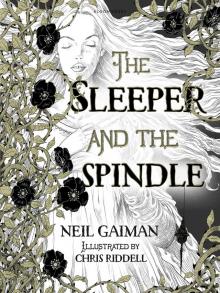 The Sleeper and the Spindle
The Sleeper and the Spindle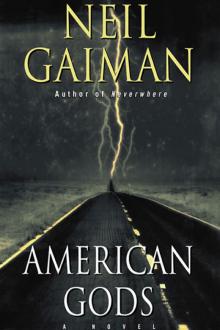 American Gods
American Gods Coraline
Coraline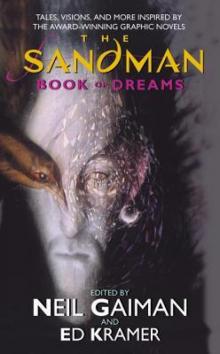 The Sandman: Book of Dreams
The Sandman: Book of Dreams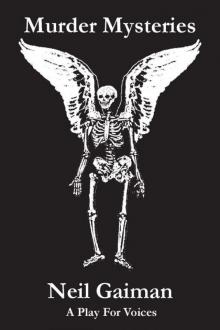 Murder Mysteries
Murder Mysteries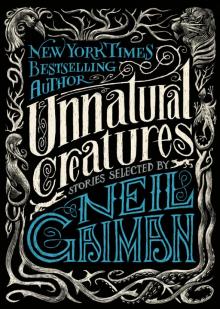 Unnatural Creatures
Unnatural Creatures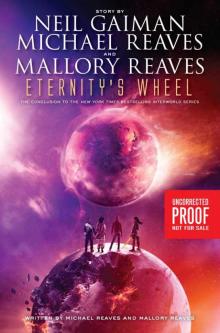 Eternity's Wheel
Eternity's Wheel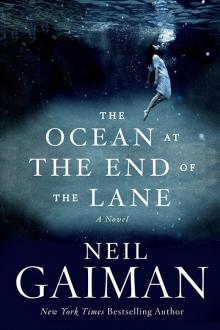 The Ocean at the End of the Lane
The Ocean at the End of the Lane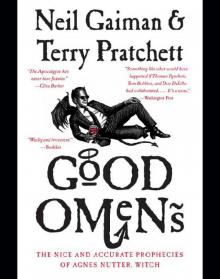 Good Omens
Good Omens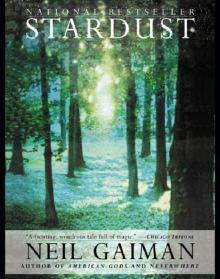 Stardust
Stardust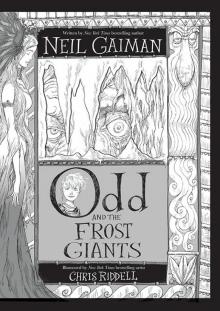 Odd and the Frost Giants
Odd and the Frost Giants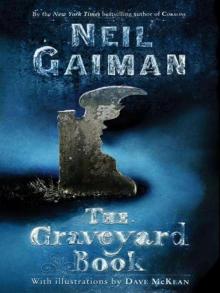 The Graveyard Book
The Graveyard Book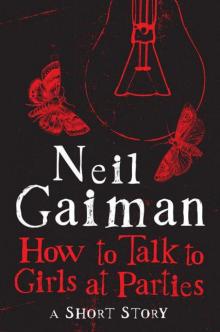 How to Talk to Girls at Parties
How to Talk to Girls at Parties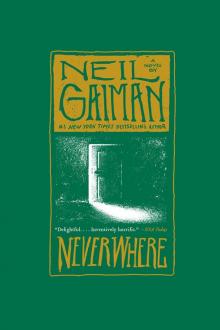 Neverwhere
Neverwhere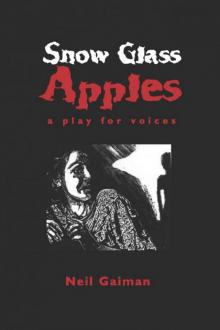 Snow, Glass, Apples
Snow, Glass, Apples Anansi Boys
Anansi Boys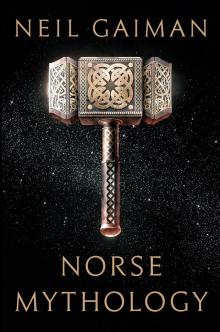 Norse Mythology
Norse Mythology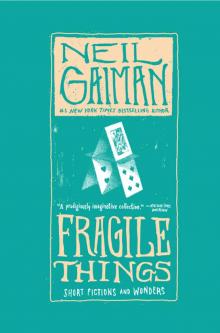 Fragile Things: Short Fictions and Wonders
Fragile Things: Short Fictions and Wonders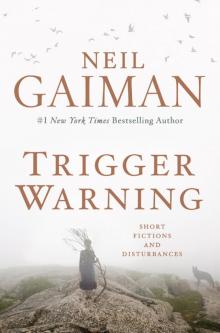 Trigger Warning: Short Fictions and Disturbances
Trigger Warning: Short Fictions and Disturbances InterWorld
InterWorld The Monarch of the Glen
The Monarch of the Glen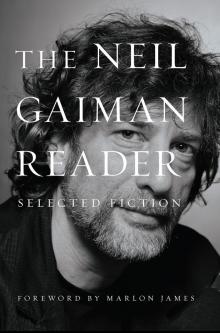 The Neil Gaiman Reader
The Neil Gaiman Reader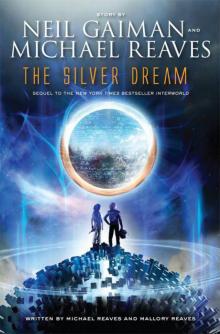 The Silver Dream
The Silver Dream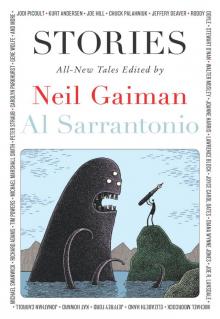 Stories
Stories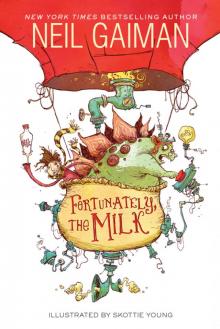 Fortunately, the Milk
Fortunately, the Milk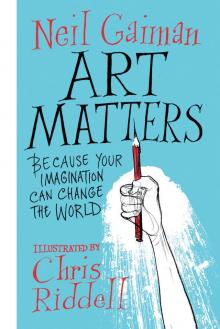 Art Matters
Art Matters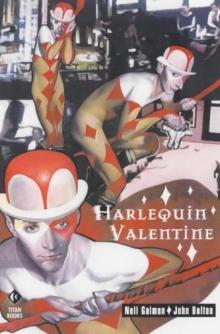 Harlequin Valentine
Harlequin Valentine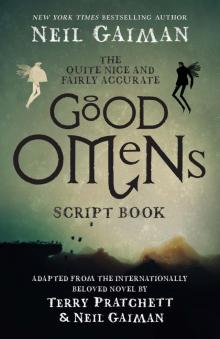 The Quite Nice and Fairly Accurate Good Omens Script Book
The Quite Nice and Fairly Accurate Good Omens Script Book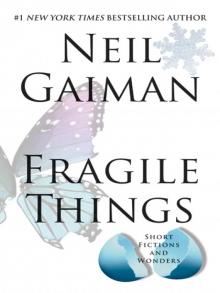 Fragile Things
Fragile Things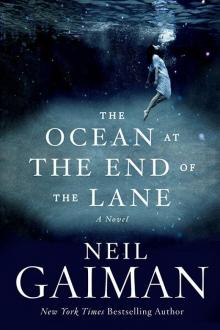 The Ocean at the End of the Lane: A Novel
The Ocean at the End of the Lane: A Novel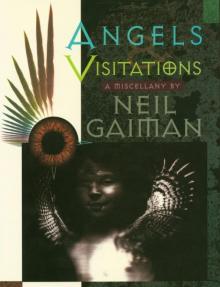 Angels and Visitations
Angels and Visitations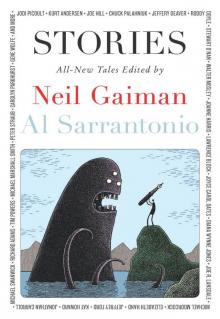 Stories: All-New Tales ngss-1
Stories: All-New Tales ngss-1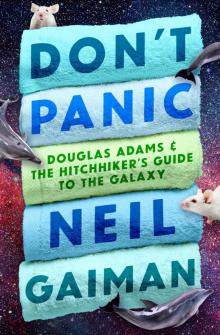 Don't Panic
Don't Panic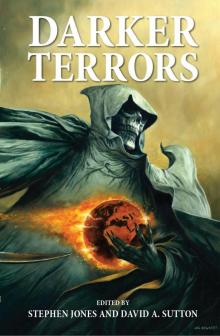 Darker Terrors
Darker Terrors Neil Gaiman Young Readers' Collection
Neil Gaiman Young Readers' Collection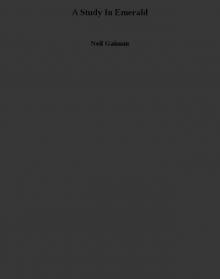 A Study In Emerald
A Study In Emerald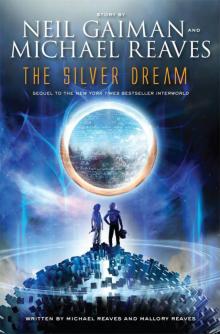 The Silver Dream: An InterWorld Novel
The Silver Dream: An InterWorld Novel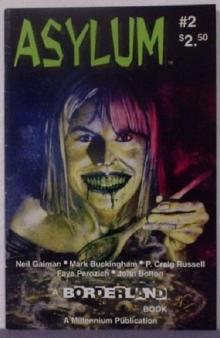 Feeders and Eaters
Feeders and Eaters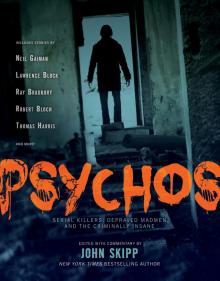 Psychos
Psychos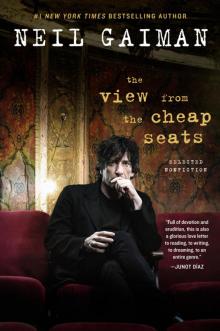 The View from the Cheap Seats
The View from the Cheap Seats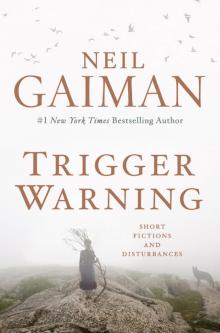 Trigger Warning
Trigger Warning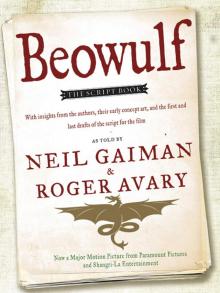 Beowulf
Beowulf Nessun Dove
Nessun Dove Doctor Who: Nothing O'Clock: Eleventh Doctor: 50th Anniversary
Doctor Who: Nothing O'Clock: Eleventh Doctor: 50th Anniversary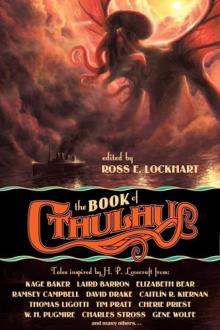 The Book of Cthulhu
The Book of Cthulhu